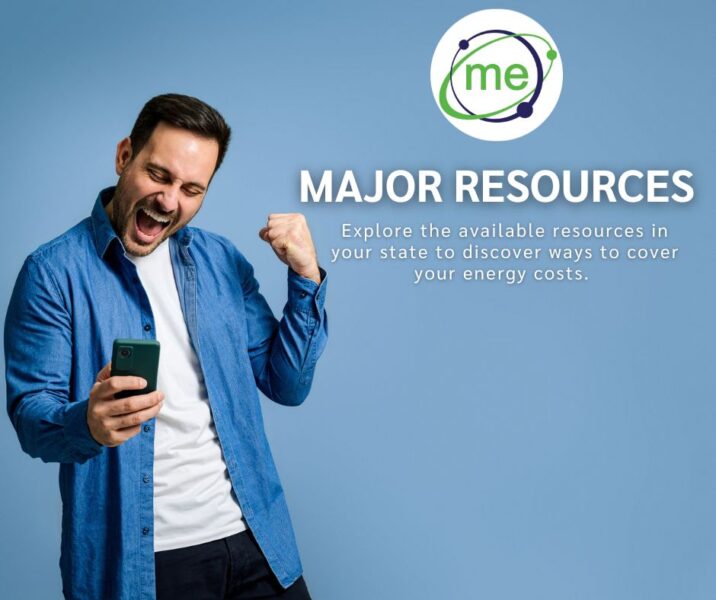Energy expenses are a part of everyone’s monthly budget. Unless you’re on a flat-rate plan, electricity and natural gas bills fluctuate each month depending on how much energy you use. That means some months are going to be more expensive than others, and in some regions of the country the winter is when costs spike. In the northeast and midwest, it’s also about the time people start factoring in the added costs of celebrating the holiday season.
Legislators understand that energy is essential for day-to-day life. Having power can even be a matter of safety during the winter when temperatures dip below freezing. To ensure that people are able to keep their homes safe and comfortable, there are programs expressly created to provide assistance with energy expenses, energy efficiency improvements and winter weatherization. Programs are available at the federal, state and local levels.
Getting Federal Assistance to Cover Energy Costs
The federal government has several departments dedicated to energy concerns. One of the top concerns is making sure people who need assistance with electricity and gas costs have it readily available. A few federal programs that are available to all Americans in every state include:
- Federal Weatherization Assistance Program (WAP)
- Low Income Home Energy Assistance Program (LIHEAP)
One of the first places to turn for assistance is the LIHEAP program. LIHEAP programs are administered at the state level, and each state has additional programs you can check into for extra assistance.
Finding Local Resources for Energy Consumers
There are a number of resources that are available regionally, you just have to know how to find them. In most cities there are four ways to find energy assistance at the state and local level:
- One of the best resources for locating programs is your local Community Action Agency (CAA).
- The local utility that supplies electricity and/or gas will often have programs to reduce energy costs.
- City governments may have their own programs that provide financial assistance or resources for making energy efficiency improvements.
- 211.org helps people across the country find assistance for energy expenses based on state and local area.
Below is a state-by-state list with some of the top resources for energy consumers in Major Energy markets. It can help get you started and point you towards resources that make energy costs more manageable.
Connecticut
- Connecticut Energy Assistance Program (CEAP)
- Crisis Heating Assistance is a one-time benefit for heating costs.
- Connecticut Weatherization Assistance Program
- Winter Protection Program that prevents utilities from being shut off.
- Get free energy assessments, energy saving plans and more from EnergizeCT
Illinois
- Illinois Home Weatherization Assistance Program (IHWAP)
- Illinois Low-Income Household Water Assistance Program (LIHWAP)
- Percentage of Income Payment Plan (PIPP)
- Help Illinois Families initiative
- Supplemental Low-Income Energy Assistance Fund (SLEAF)
- Furnace Assistance Program
Maine
- Maine Home Energy Assistance Program (HEAP)
- Weatherization Program through the Maine State Housing Authority
- Low Income Assistance Plan (LIAP) from local utility company
- Central Heating Improvement Program (CHIP) that provides funds for replacing and repairing heating systems
Maryland
- Maryland Energy Assistance Program (MEAP)
- Office of Home Energy Programs (OHEP)
- Electric Universal Service Program (EUSP)
- Arrearage Retirement Assistance
- Utility Service Protection Program (USPP)
- Weatherization and Energy Efficiency Services from the Maryland Department of Housing and Community Development (DHCD)
- EmPOWER Low Income Energy Efficiency Program (LIEEP)
- Fuel Fund of Maryland
Massachusetts
- HEARTWAP the Heating Emergency Assistance Retrofit Task Weatherization Assistance Program for improving and repairing heating systems
- Free energy assessments through MassSAVE
- The Massachusetts Good Neighbor Energy Fund from The Salvation Army.
New Jersey
- Home Energy Assistance (HEA)
- Universal Service Fund (USF)
- USF Fresh Start program
- Payment Assistance for Gas and Electric (PAGE) Program
- New Jersey Statewide Heating Assistance and Referral for Energy Services (SHARES) Programs
- Lifeline program for seniors and people with disabilities
- New Jersey Comfort Partners Program
- Weatherization Assistance (WAP)
- Winter Termination Program
New York
- New York Home Energy Assistance Program (HEAP)
- Emergency HEAP benefits
- Energy Assistance Program (EAP) Basic Benefit
- EAP Limited Benefit
- HEAP Cooling Assistance benefits
- Utility Assistance Program (UAP)
- Heating Equipment Repair and Replacement (HERR) benefit
- Clean and Tune Benefit for heating equipment
- Matching Incentive Payment Program
- EmPower New YorkSM
- Power Partner Program
- Assisted Home Performance with ENERGY STAR® Program
- Last Stop Heating Assistance Program
- County Fuel Funds
- County energy efficiency improvement programs
- HeartShare programs
Pennsylvania
- Homeowners Assistance Fund (HAF)
- Pennsylvania Weatherization Assistance Program
- Dollar Energy Fund
- Customer Assistance Programs (CAPs)
- Customer Assistance Referral and Evaluation Program (CARES)
- Low Income Usage Reduction Program (LIURP)
- Hardship Funds through utility provider
Ohio
- Ohio Home Energy Assistance Program (HEAP)
- HEAP Winter Crisis Program
- HEAP Summer Crisis Program
- Ohio Fuel Fund
- Ohio Partners for Affordable Energy (OPAE)
- Percentage of Income Payment Plan (PIPP)
- Electric Partnership Plan (EPP)
- Emergency Hardship Funds
- Ohio Home Weatherization Assistance Program
- Home Relief Grant
Washington, D.C.
- Washington, D.C. Low Income Home Energy Assistance Program (LIHEAP)
- Utility Discount Programs (UDP)
- Weatherization Assistance Program
At Major Energy we’re always here to help you better manage your energy expenses from tips on how to save electricity to offering fixed rate energy plans that make costs more predictable. Our amazing customer service team is also just a call away if you have questions about your energy plan or how to find the plan that will work best for your budget.
